You have a unique muscle called the multifidus muscle, which plays an important role in the well-being of your spine. Despite its importance, most people are unfamiliar with this remarkable muscle. Taking the time to learn what its role is in your body and how to strengthen it, may improve your overall function, stability, and even ease pain.This unsung muscle hero works tirelessly to stabilise and protect your spine, while also helping in extending and rotating your back. It holds your backbone firmly and provides strength as you bend and move. By doing so, it effectively reduces pressure on your spinal discs and minimises the risk of injury.
The multifidus muscle is long and thin, consisting of many muscle bundles. Each bundle spans only a few vertebrae, but together, they connect and support most of your spine. Nestled deeply against your backbone, this muscle extends from your pelvis and tailbone to your lower back, mid- back, and neck. Due to its role, a weak multifidus can disrupt vertebral stability, particularly in your lower back. Within your lumbar spine lies a neutral zone, which represents the range of motion that can be achieved easily from a relaxed position with minimal muscular effort. Remaining within this neutral zone requires less energy and places less stress on your spine, resulting in improved functionality, reduced pain, and decreased disability. Just like perfectly aligned car tyres require less effort to move, the same principle applies to your spine. The multifidus muscle works its magic by stabilising your spine without conscious effort, contracting and relaxing as needed. However, injury or weakness can occur, making it harder to maintain a safe and neutral zone. As a result, your spine may begin to subtly ‘wobble’ more than usual, needing additional effort to secure it. This places increased pressure on the surrounding tissues, potentially leading to damage and dysfunction; especially if you’ve undergone back surgery. In fact, damage to this muscle is associated with a condition known as failed back surgery syndrome. Fortunately, you can strengthen the multifidus through regular exercise. One example is "The Superman". To perform this exercise, lie on your stomach on the floor. Extend your arms over your head while keeping your legs straight. Maintain a neutral head position by imagining you’re keeping a ball between your chin and chest. Gently contract your abdominal muscles, and slowly lift your arms and legs off the floor until you feel your lower back engage. Hold this position for two to three seconds, and then repeat ten times, twice. Stop if you feel pain. It’s important to note that the multifidus muscle is not the only muscle that supports your spine and there are a number of strengthening exercises. Talk to your chiropractor first, we can provide advice on customised exercise to ensure optimal results and prevent potential complications. Feel free to reach out to us if you have any questions or concerns.
0 Comments
6/9/2023 0 Comments FarinataFarinata (or socca) is a type of pancake made from chickpea flour which originated in Italy. Fermenting the batter makes it light and creamy and helps increase the nutritional value of the chickpea flour. These can be served as a snack or side dish, or add toppings to make a light meal.Makes 2 large ‘pancakes.’
INGREDIENTS 1 cup chickpea flour 1 tsp apple cider vinegar or lemon juice 300ml water 1 teaspoon salt 3 tablespoons olive or coconut oil (melted) METHOD
Seasonings: fresh or dried herbs, pepper, a sprinkling of grated parmesan. Toppings: Can include any combination of pesto, cheese, olives or vegetables such as zucchini, tomato, peppers. Fermented foods have become popular for their health benefits, but what are they, and are they actually good for us?The process of fermenting foods has been around for centuries and was used as a way to preserve food and improve flavour and digestibility. Over time, fermentation has been linked to many health benefits which have prompted numerous scientific studies.
What are fermented foods? These are foods which have undergone fermentation − a natural process in which beneficial microorganisms like yeast and bacteria break down the sugars, resulting in the production of various nutrients. This process gives fermented foods a unique flavour and aroma. The fermentation process is complex as the microbes are powerful; the slightest change in their environment can produce different products – such as harmful fungi. Therefore fermentation conditions must be carefully controlled to get the desired outcomes. Fermentation can occur naturally in the food or processing situation, such as sauerkraut, kimchi, and some soy products. Otherwise, food can be fermented by adding starter cultures, for example, kefir and kombucha. Are fermented foods beneficial? Most foods can be fermented, like vegetables, fruits, grains, dairy, legumes, and even meat and fish. These foods are all nutritious in their original form, but fermentation adds more health benefits – especially when they contain probiotics. Probiotics occur in many fermented foods, including yogurt, sauerkraut, and miso. Probiotics encourage helpful bacteria and other organisms in your gut, which is very important for many aspects of your health. Are probiotic supplements as good? While supplements can provide certain probiotics, they may not offer the same nutritional benefits as consuming real fermented foods. Fermented foods offer live bacteria and a variety of nutrients which your body can absorb and use more efficiently than supplements. However, supplements may be valuable when it's challenging to obtain sufficient nutrients from your diet, or when deficiencies are identified. Speak to your doctor before adding supplements to your diet. Your doctor can help you avoid the risks that may make your health issues worse. 6/9/2023 0 Comments RSI and how to prevent itAre you aware of the toll repetitive tasks can have on your body? Many of us overlook this, but it's crucial to recognise the potential consequences, such as repetitive strain injury (RSI). In this article, we explore this condition and suggest ways to help prevent it.RSI causes discomfort and pain in your muscles, nerves, and tendons due to repetitive movements and overuse. It commonly affects people engaged in repetitive activities such as: office work, assembly line tasks, construction, retail, music, and sports.
The primary cause of RSI is the overuse of a particular muscle or muscle group; especially when you also use awkward movements. Factors such as poor posture, and exerting yourself too much or when your muscles are tired, contribute to muscle fatigue and damage. This damage can trigger inflammation and swelling, leading to pain, weakness, numbness, and trouble using the affected area. RSI commonly occurs in your upper limbs encompassing your fingers, wrists, hands, forearms, elbows, and shoulders. However, the lower limbs are also susceptible, like ankles, feet, legs, knees, and hips. Additionally, areas such as your neck and back, which are the main areas that affect our patients, are also prone to repetitive strain injuries. This condition results in a range of common disorders, including: bursitis, carpal tunnel syndrome, golfers elbow and tennis elbow, shin splints, tenosynovitis (affecting the sheaths surrounding tendons), trigger finger, and even certain spinal issues. Can you prevent RSI developing? To prevent the development of RSI here are several key measures you can take:
It is also important to prioritise good ergonomic practices; however everyone's needs are different so personalised guidance is essential. Seek expert advice to find the right solutions for you, including suitable equipment, breaks and rest periods, posture adjustments, and exercises if necessary. RSI can cause significant and long term discomfort and disability; if you have questions about this condition, please ask us. Prevention is always better than cure. 23/8/2023 0 Comments Spring CleaningAt this time of year, many people are thinking about their annual “spring clean” around the house. Winter has left its mark and there’s a nagging drive to want to freshen things up.Spring cleaning can be surprisingly therapeutic and, before you know it, several hours have gone by. The house looks great and you are feeling pleased with a job well done. It’s often not until the next day that you realise there was a price to pay for your cleaning enthusiasm... your back!
Do you suffer from back pain after working on or around the house? It’s not uncommon due to the hunched or awkward positions people often assume for lengthy periods of time while cleaning their home. It’s important to pace yourself and take regular breaks. Allow your body and spine to assume a normal upright position and walk around to get some movement through your joints. Where possible kneel rather than bend. This prevents additional stress on your spine and helps the muscles in your lower back to remain relaxed. Also, although it may be all you want to do, don’t sit down immediately after you have finished. You may find when you go to get up again that you are stiff and sore. Ideally, have a gentle ten minute walk and let your body loosen up and wind down after its mammoth effort! 3/7/2023 0 Comments Pear and apple crumbleINGREDIENTS
4 pears, diced 4 apples, diced 1 cup ground almonds 1⁄2 cup oatmeal 1⁄4 cup coconut oil, melted 2 Tbsp honey or maple syrup 1 tsp cinnamon 1⁄4 tsp ground ginger METHOD 1. Preheat oven to 180 degrees. 2. Mix pears and apples and place into a large baking dish, leaving room for the topping. 3. Combine remaining ingredients in a bowl, then sprinkle over the fruit. 4. Bake for approximately 30 minutes until golden and bubbling. Allow to cool for 10 minutes before serving, as the fruit will be very hot. Options
You probably know eating fibre is important for your health, but do you know why?Fibre's main function is to maintain digestive system health, but it can also aid weight control, diabetes management, and decrease the likelihood of certain diseases.
A high-fibre diet can stabilise blood sugar and cholesterol levels, reducing the risk of various conditions such as type 2 diabetes and heart disease. Fibre promotes healthy digestion, regulates bowel movements and helps to control appetite, all of which help to prevent conditions such as colon cancer, haemorrhoids, constipation, and obesity. Additionally, fibre-rich foods are typically high in essential nutrients like vitamins and minerals, which are necessary for optimal health. What foods contain fibre? Fibre is found in plant products, like fruits, vegetables, and cereals. There are two types of fibre which your body needs daily: soluble and insoluble. Most plant foods contain a mixture of both. Insoluble fibre is part of plant cell walls which helps to keep your bowels regular. Good sources are found in the skin of fruit and vegetables, whole grains, nuts, seeds, and beans. Insoluble fibre helps to add bulk, and to prevent constipation and associated problems such as haemorrhoids. Soluble fibre mainly exists in plant cells and one of its major roles is to lower LDL (bad) cholesterol levels. You can get plenty of soluble fibre from fruit and vegetables, peas, lentils, oat bran, seeds, and soy products such as soy milk. Soluble fibre can also help with constipation by acting as a sponge, making bowel contents softer and easier to move. Eat a variety of nutritious food to get each type of fibre, drink plenty of fluid to help it work efficiently, and enjoy the benefits of better health.and enjoy the benefits of better health. 3/7/2023 0 Comments Curious About Collagen?Collagen is the most abundant protein in your body. It’s particularly important as a building block for your connective tissue – this is the stuff that makes your body supple, resilient and stretchy where it needs to be.Collagen is an essential component of our bones, skin, muscles, and cartilage. It’s found in meat and fish which contain connective tissue, but we can also get the basic ingredients to make collagen in our own bodies by eating a healthy varied diet, including plant-based.
You produce less collagen as you age, which is one of the reasons why your skin becomes less elastic and more lined. However, collagen production is affected more by your lifestyle. Collagen decreases due to overexposure to sun, smoking, a poor diet (too much sugar, processed food, and alcohol), and lack of sleep and exercise. The use of collagen supplements is on the rise, with claims they can improve bone and joint health, and reduce the signs of aging – but do they really work? Are collagen supplements, creams and lotions effective? Research on the benefits of extra collagen in the diet has found that it may improve joint mobility and decrease joint pain, or slow the collagen loss that comes with aging. However, more comprehensive human studies are needed to support these results. Also, collagen supplements can vary in quality. If you are thinking of taking a collagen supplement it’s important to know exactly what’s in it, as it may be combined with other ingredients that might require more caution. Topical preparations – creams and lotions that we rub into our skin – that contain collagen are thought not to be very useful, as collagen is not absorbed through the skin. Adding collagen to the diet through collagen supplements may have some benefits, but most people make enough collagen naturally by following a healthy diet and lifestyle. To give your body the best chance to make its own collagen, make sure you’re getting plenty of low fat protein, whole grains, nuts, fruit and vegetables. Your shoulder can be easily injured due to its complexity and vast range of motion and injuries are common, particularly in your rotator cuff. In this article, we explore what the rotator cuff is, how injuries can occur, and what you can do to keep your shoulders healthy.The rotator cuff is a group of four muscles and tendons that are situated in your shoulder joint. They work together to stabilise your shoulder and enable you to move your arm, allowing you to perform essential everyday activities such as lifting, reaching, and throwing.
How do injuries occur to the rotator cuff? Rotator cuff injuries can be due to various reasons, including trauma, overuse, or age- related degeneration. Traumatic injuries can result from a fall, a direct blow to your shoulder, or sudden excessive force on your shoulder joint. Overuse injuries happen when your rotator cuff muscles and tendons are repeatedly overworked, such as during repetitive overhead activities like throwing, swimming, or weightlifting. Age-related degeneration occurs naturally over time as the tendons lose their elasticity and become more prone to tears. How do injuries affect general health? Rotator cuff injuries can have a significant impact on your body and your wellbeing. They can cause pain, weakness, limited mobility, difficulty performing daily activities, and even affect your sleep and mood. If left untreated, rotator cuff injuries can lead to long-term pain and muscle imbalances. Moreover, the movements or postures you may adopt to avoid shoulder pain can lead to issues in other parts of your body, affecting overall musculoskeletal health. Can rotator cuff injuries be prevented? Fortunately, there are preventive measures that you can take to keep your rotator cuff healthy and prevent injuries:
Taking preventive measures can go a long way in keeping your shoulders healthy and reducing the risk of injuries. Remember to pay attention to your body, and talk to us if you experience any issues with your shoulders. We provide personalised advice based on a professional diagnosis. You may not think about how your feet are hitting the ground when you walk or run, but the way you step matters, especially if you enjoy sports, like running. If your feet twist inwards, or you have fallen arches, you could be excessively pronating. Let’s investigate this and what it means for your body.Pronation and supination of the ankle and feet allow your feet to adapt to uneven ground, absorb shock, and walk. Technically, pronation refers to the combined movements of your foot and ankle - turning outward, moving away from your body, and bending upwards.
But sometimes pronation can be excessive, which is called over pronation. It’s common and tends to be more prevalent with age, obesity, and in women. High-impact sports like basketball and ankle injuries can cause or contribute to over pronation. It can also affect more than just your foot and ankle motion; other areas of your body may become strained. Over pronation changes mechanical function, so your bones and muscles can become stressed. Foot, arch, and heel pain can result, but it may also affect your pelvis and spine. When your foot rolls inwards, it causes your legs, knees, hips, and spine to twist and shift. This may also cause other problems, for example back pain is common in over pronators. Fortunately, there are ways to treat over pronation. Wear shoes that provide proper support and stability, like arch support and motion control. In some cases, orthotics (custom-made shoe inserts), may help to correct pronation and provide additional support. Exercises to strengthen your feet and core are essential. For example:
We are trained in the diagnosis and management of musculoskeletal conditions, which includes assessing and treating issues related to foot mechanics. We can discuss with you different options to help with over pronation, which may also prevent further damage to your body. |
AuthorAdam's Back is a team of dedicated complimentary health professionals. Our aim is to support you in finding drug-free solutions for better health. Archives
March 2024
Categories |
Search by typing & pressing enter
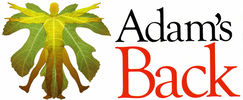
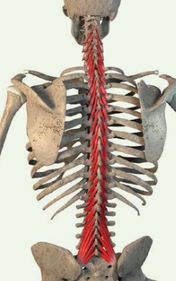
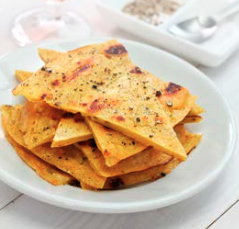
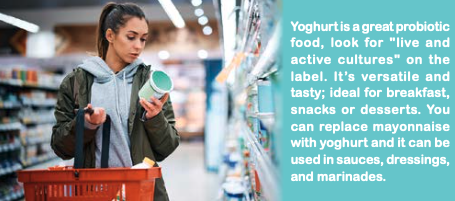
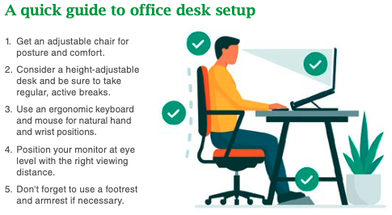

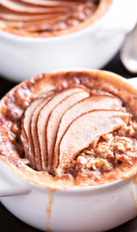
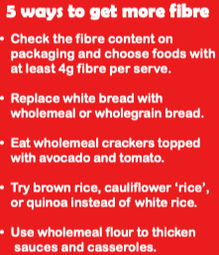
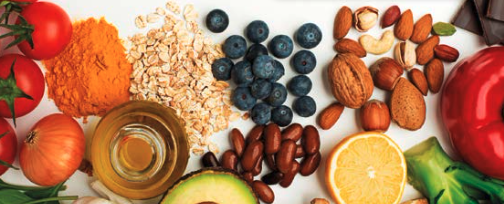
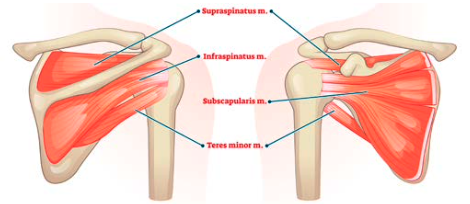
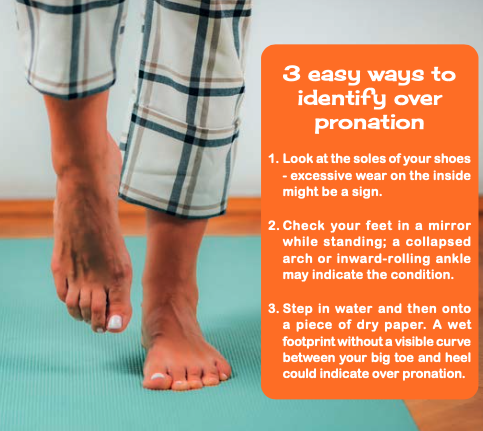
 RSS Feed
RSS Feed